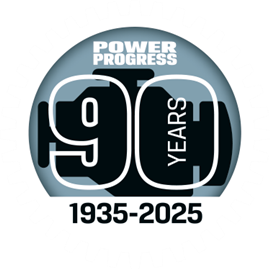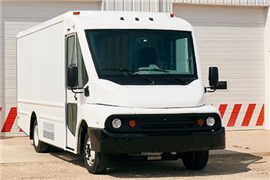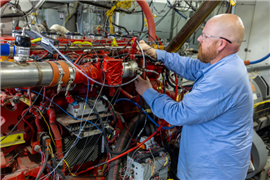Read this article in Français Deutsch Italiano Português Español
Alpine Alpenglow Hy4 features hydrogen internal combustion power
04 June 2024
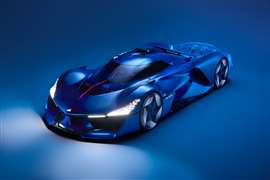 Alpine Alpenglow Hy4 features a hydrogen internal combustion engine (Photo: Alpine)
Alpine Alpenglow Hy4 features a hydrogen internal combustion engine (Photo: Alpine)
Hydrogen fuel cells and hydrogen internal combustion engines (ICEs) have been under development for the best part of 30 years. Over that time, both technologies have made considerable advances in terms of functionality, energy output and efficiency.
Hydrogen fuel cells have now advanced to where the fuel cell stacks are smaller, use less-expensive materials and are easier to manufacture. But they still require ultra-clean hydrogen and air to deliver peak performance, making them less than ideal for applications where the atmospheric conditions and fuel quality are difficult to control.
Hydrogen internal combustion is a far more rugged solution, but has its own issues. On first examination it would appear that injecting H2 into a combustion chamber would be relatively easy, but the very nature of the fuel creates issues and drawbacks far different to those of diesel or petrol.
That said, the tech needed to support successful H2 internal combustion is now at a point where the solution is becoming a viable, reliable proposition. Only recently, MAN Truck & Bus reported that it would start production of the hTGX heavy-duty truck in limited numbers using an H2 ICE. Not long after, Volvo announced it was to start testing of trucks using similar tech.
With these examples, and the development of H2 ICEs by the likes of JCB, Deutz, Liebherr and others, it would seem that the solution is destined for use in the off-highway machine and on-highway transport sectors, with some marine likely to feature in the mix.
But not so – in a deviation from our usual coverage, we present the Alpine Alpenglow Hy4. Beyond the track-oriented looks, the Alpenglow shares tech with both the MAN and Volvo trucks noted above, in that it uses a four-cylinder hydrogen ICE.
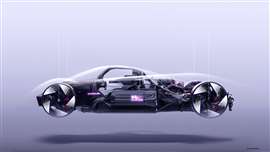 Three onboard tanks store compressed hydrogen - liquid hydrogen version is planned (Photo: Alpine)
Three onboard tanks store compressed hydrogen - liquid hydrogen version is planned (Photo: Alpine)
The 2.0-litre turbo direct injection engine delivers 340 bhp (approx. 250 kW) at 7,000 rpm, which can take the car to a top speed of 167 mph (270 km/h). Based on an LMP 3 chassis, the model has three 55-litre fuel tanks for storage of compressed hydrogen. A water injection system is used for ‘combustion moderation’ (read: cooling of the combustion chamber), while also helping to reduce NOx output.
Alpine describes the Alpenglow as a ‘seminal’ concept – in addition to this inline four-cylinder H2 ICE, development of a V6 variant is evidently now underway.
Whether the tech featured in this racer makes its way into passenger models from Alpine – a brand within the Renault Group – we will have to wait and see. But what is the point of concept cars, if not to test proof of concept? It’s possible that hydrogen ICEs will feature in more than machines and trucks of the future.
POWER SOURCING GUIDE
The trusted reference and buyer’s guide for 83 years
The original “desktop search engine,” guiding nearly 10,000 users in more than 90 countries it is the primary reference for specifications and details on all the components that go into engine systems.
Visit Now
STAY CONNECTED




Receive the information you need when you need it through our world-leading magazines, newsletters and daily briefings.
CONNECT WITH THE TEAM







